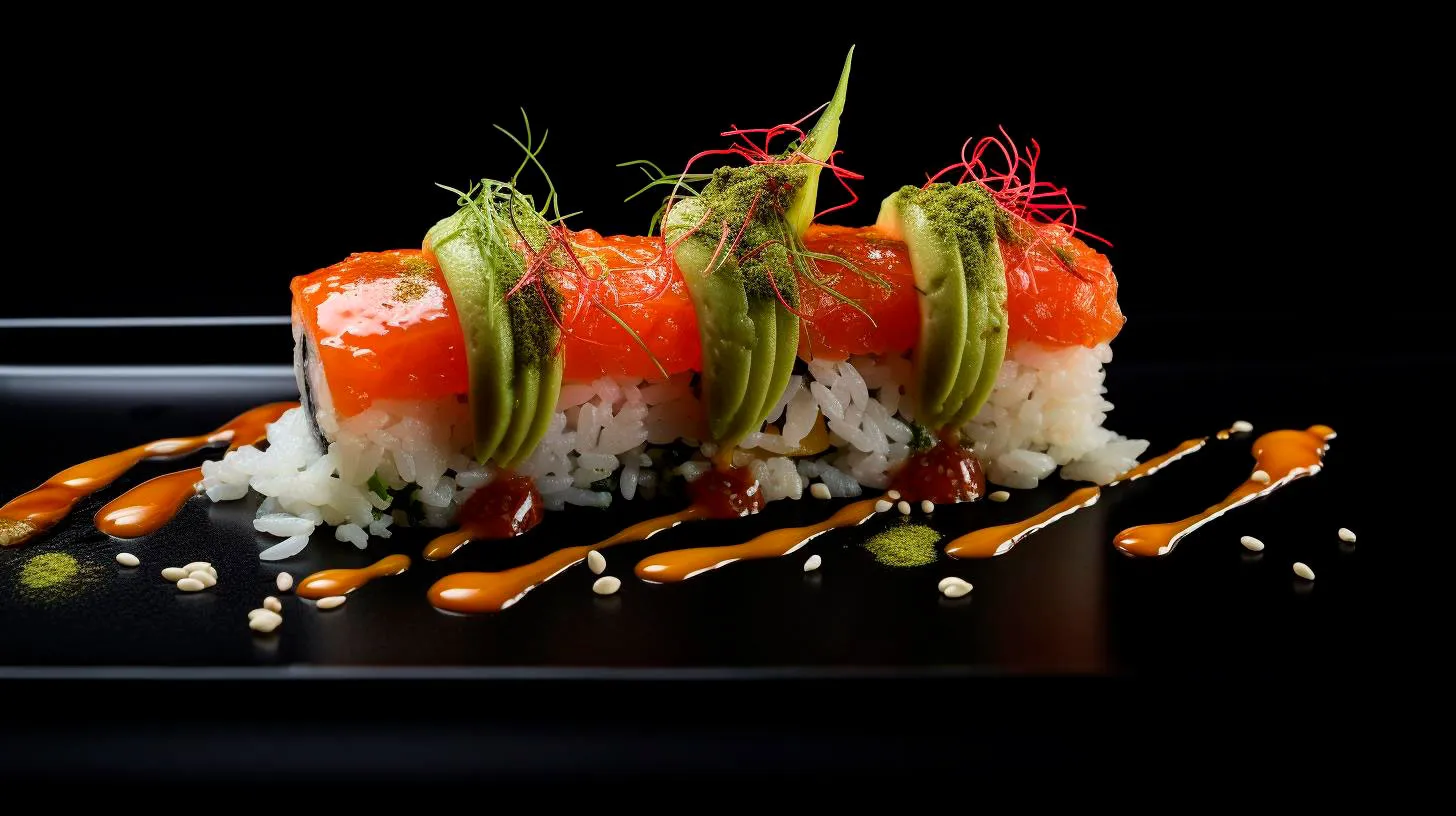Understanding the Influence of Temperature on Tempura Batter Crispiness
In this article, we delve into the influence of temperature on tempura batter crispiness and uncover tips to optimize your tempura cooking experience.
The Science Behind Tempura Batter Crispiness
To comprehend the relationship between temperature and tempura batter crispiness, let’s take a closer look at the science behind it. When a batter is exposed to heat, the water content in the batter evaporates, resulting in the formation of steam. This steam creates air pockets within the batter, contributing to its light and airy texture. At the same time, the heat causes the proteins in the batter to denature and set, creating a crispy exterior.
Temperature plays a significant role in achieving the ideal texture. Too low of a temperature can result in a heavy and greasy tempura, while too high of a temperature can lead to a burnt and overly crispy coating. Finding the sweet spot is vital to ensure a perfectly crispy tempura batter.
The Optimal Temperature for Tempura Crispiness
Now that we understand the science, let’s explore the optimal temperature range for achieving the desired tempura crispiness:
- Oil temperature: The ideal oil temperature for frying tempura is around 340°F to 360°F (170°C to 180°C). This range allows the batter to crisp up quickly without absorbing excessive oil.
- Batter temperature: It is essential to keep the batter chilled before using it. The cold batter reacts better to the hot oil, creating a more pronounced contrast between the crispy exterior and the tender interior.
Tips for Achieving Perfectly Crispy Tempura Batter
Now that we know the optimal temperature range for tempura crispiness, let’s discuss some tips to help you achieve that perfect crunch:
- Use a thermometer: Invest in a kitchen thermometer to accurately monitor the oil temperature. This ensures you maintain the ideal frying conditions.
- Prevent oil temperature fluctuations: Maintain a consistent oil temperature by frying small batches of tempura at a time. Overcrowding the pan can cause the temperature to drop, leading to less crispy results.
- Drain excess oil: Once the tempura is cooked, place it on a wire rack or paper towels to drain any excess oil, preventing sogginess.
- Experiment with batter consistency: Adjusting the batter’s thickness can affect the crispiness. A thinner batter tends to produce a lighter and crispier result, while a thicker batter can provide a heartier coating.
The Importance of Tempura Batter Crispiness
The crispiness of the tempura batter significantly impacts the overall dining experience. Here’s why achieving the perfect crunch is essential:
- Texture: A crispy tempura coating adds a delightful textural contrast to the tender seafood or vegetables, enhancing the enjoyment of each bite.
- Presentation: A well-executed tempura with a crispy and golden exterior is visually appealing, making it even more enticing.
- Healthier Alternative: A crispy batter signifies a well-fried tempura, indicating that it has absorbed less oil during the cooking process.
The influence of temperature on tempura batter crispiness should not be overlooked. By understanding the science, using the optimal temperatures, and implementing some pro tips, you can elevate your tempura cooking game and create a truly crispy and mouthwatering culinary experience.
Key Takeaways
- Temperature has a significant influence on tempura batter crispiness.
- The optimal oil temperature for frying tempura is around 340°F to 360°F (170°C to 180°C).
- Chilling the batter before use helps achieve a pronounced contrast between the crispy exterior and tender interior.
- Using a thermometer and frying small batches are essential for maintaining consistent oil temperature.
- Properly draining excess oil and adjusting batter consistency can impact the final crispiness of the tempura.
- Crispiness enhances the texture, presentation, and healthiness of tempura.
The Secrets to Achieving the Ideal Texture in Tempura Frying
The Art of Tempura Frying
Tempura is a traditional Japanese dish consisting of battered and deep-fried seafood, vegetables, and other ingredients. The true magic lies in its unique texture – a delicate, crispy exterior with a light and fluffy interior. To achieve this, there are a few key factors to consider:
- The Flour: Tempura batter is typically made with a combination of wheat flour and starch. Using a high-quality flour with a low protein content, such as cake or pastry flour, is crucial to achieving the desired texture. The low protein content ensures a lighter and crispier coating.
- The Cold Water: Another crucial element is using very cold water when preparing the batter. The cold water helps create a chemical reaction with the flour, resulting in a crispier texture. Keeping the batter cold throughout the frying process is equally important, as it prevents excess absorption of oil.
- The Technique: The way you handle the ingredients while frying is vital to the texture. It is essential to dip the ingredients quickly into the batter and immediately transfer them into hot oil. A light touch and a gentle flick of the wrist while dipping the ingredient into the batter will help create a thin and delicate coating.
Key Takeaways for Perfect Tempura Texture
Now that you know the secrets behind achieving the ideal texture in tempura frying, here are some key takeaways to remember:
- Select a high-quality flour with low protein content for a lighter and crispier coating.
- Use very cold water to create a chemical reaction that results in a crisper texture.
- Handle the ingredients with a light touch and dip them quickly into the batter.
- Transfer the ingredients immediately to hot oil for frying.
- Keep the batter and frying oil cold to prevent excess absorption of oil.
Advantages of Achieving the Ideal Tempura Texture
Understanding the secrets to achieving the perfect tempura texture offers several advantages:
- Enhanced Flavor: The light and crispy texture of tempura allows the delicate flavors of the ingredients to shine through. It provides a delightful contrast to the succulent seafood or crisp vegetables, resulting in a truly satisfying dining experience.
- Visual Appeal: Tempura with the ideal texture looks visually stunning. The golden-brown exterior, thin and delicate coating, and the contrasting colors of the ingredients make it an eye-catching dish that becomes a feast for the eyes.
- Healthier Option: Achieving the ideal tempura texture means less oil absorption during the frying process. This makes tempura a healthier alternative to heavily battered and greasy fried foods.
Industry Statistics: Tempura’s Worldwide Popularity
Tempura has gained significant popularity worldwide over the years. Here are some industry statistics that highlight its global appeal:
- According to a report by Allied Market Research, the global tempura market is expected to reach $5.6 billion by 2026, with a CAGR of 4.3% during the forecast period.
- In the United States, the demand for tempura has been steadily increasing. The National Restaurant Association named tempura as one of the top 10 food trends in their “What’s Hot 2021 Culinary Forecast.”
- Tempura is a favorite choice among tourists visiting Japan. According to the Japan National Tourism Organization, over 32 million international travelers visited Japan in 2019, with many eager to experience authentic, crispy tempura.
Now armed with the secrets of achieving the ideal texture in tempura frying, you can take your culinary skills to new heights. Whether you are a professional chef or an avid home cook, mastering the art of tempura frying will undoubtedly impress your guests and leave them craving for more!
The Role of Gluten and Carbonation in Achieving Crispy Tempura
In this article, we will delve into the role of gluten and carbonation in the process of achieving the ideal crispiness in tempura. Let’s explore!
The Science Behind Crispy Tempura
Tempura batter is a delicate mix of flour, water, and often other ingredients such as egg or baking powder. The key to achieving that sought-after crunch lies in understanding the role of gluten and carbonation.
The Role of Gluten
Gluten, a protein composite found in wheat and other grains, plays a crucial role in the structure and texture of tempura batter. When flour is combined with water, gluten strands begin to form. These strands provide the necessary strength and structure to trap air bubbles during frying, resulting in a light and crispy coating.
The formation of gluten strands is influenced by the flour used. Traditional tempura recipes call for low-gluten flours like cake flour or a mixture of cake flour and wheat flour. The lower gluten content prevents the batter from becoming too tough, ensuring a delicate and crispy tempura coating.
The Power of Carbonation
Carbonation, the process of dissolving carbon dioxide (CO2) gas in a liquid, is another crucial factor in achieving crispy tempura. When carbonate-rich liquids like sparkling water or club soda are incorporated into the batter, the carbon dioxide bubbles released during frying contribute to a lighter and crisper texture.
The carbonation process creates air pockets within the batter, resulting in a delicate and crispy tempura coating. The CO2 gas expands when heated, creating a finer texture and enhancing the overall crispiness of the final product.
Tips for Perfectly Crispy Tempura
Now that we understand the science behind achieving a crispy tempura coating, let’s explore some helpful tips to ensure your tempura turns out perfectly every time:
- Use low-gluten flours like cake flour or a mixture of cake flour and wheat flour.
- Incorporate carbonation into your batter by using sparkling water or club soda.
- Keep your batter cold by placing it in the refrigerator before use. Cold batter helps to create a lighter texture and prevents excessive oil absorption.
- Avoid over-mixing the batter to prevent gluten development, which can result in a tough coating.
- Ensure a consistent frying temperature of around 180-190°C (356-374°F). This temperature allows the batter to cook evenly and achieve a golden crispy texture.
- Use a neutral oil with a high smoke point, such as vegetable or canola oil, for frying. This prevents the oil from impacting the flavor of the tempura.
- Do not overcrowd the frying pot or pan. Frying in smaller batches ensures that each tempura piece cooks evenly and maintains its crispiness.
Key Takeaways
Creating the perfect crispness in tempura requires a combination of factors. Remember these key points:
- Gluten provides structure and traps air bubbles, contributing to the crispiness of tempura.
- Carbonation adds lightness and enhances the texture by creating air pockets within the batter.
- Using low-gluten flours and incorporating carbonation will help you achieve a delicate and crispy tempura coating.
- Keep your batter cold, maintain a consistent frying temperature, and use the right oil for optimal results.
By understanding the role of gluten and carbonation in achieving crispy tempura, you can take your tempura cooking skills to new heights. Experiment with different flours and carbonated liquids to find the perfect combination that suits your taste. So, grab your ingredients, mix up some batter, and fry your way to tempura perfection!
Unraveling the Chemical Reactions behind Perfectly Crunchy Tempura
In this article, we will delve into the science behind tempura, uncovering the secrets to creating that addictive crunch at home.
The Maillard Reaction and the Crispy Coating
One of the primary contributors to the coveted crispiness of tempura is the Maillard reaction. This chemical reaction occurs when proteins and sugars interact at high temperatures, resulting in the browning and creation of complex flavors. In tempura, the proteins from the ingredients and starch from the batter combine to form a web-like structure on the surface, giving it that signature crunch.
Key Takeaway: The Maillard reaction plays a crucial role in achieving the perfect crunch in tempura, resulting in a delectable sensory experience for the diner.
The Role of Gluten Development
Gluten, a protein found in wheat flour, has a significant impact on the texture of tempura. When gluten is mixed with water, it forms an elastic network that traps air bubbles during frying. This traps moisture inside the batter, preventing it from becoming greasy and ensuring a light and airy coating.
Key Takeaway: Developing gluten in the batter is essential for creating a crispy tempura coating that is not overly oily.
The Influence of Carbon Dioxide Release
Another critical aspect of achieving a crunchy tempura lies in the release of carbon dioxide gas during cooking. The high temperature causes a rapid increase in steam production, which pushes against the batter’s protein and starch network, resulting in a light and airy texture. This process is similar to the puffing of bread or other deep-fried items.
Key Takeaway: The release of carbon dioxide contributes to the formation of a delicate and crunchy tempura coating.
Tips for Crispy Tempura
- Ensure the ingredients are dry before dipping them in the batter to minimize the moisture content, which can lead to sogginess.
- Use ice-cold water when preparing the batter. The cold temperature helps keep the gluten development to a minimum, resulting in a lighter and crispier texture.
- Avoid over-mixing the batter as it can lead to gluten development, resulting in a denser coating.
- Fry the tempura in hot oil (around 170-180°C/340-350°F) to ensure a quick and crisp cooking process.
- Don’t overcrowd the frying pan or fryer, as it can lower the oil temperature and result in a greasy coating.
By understanding and utilizing the science behind tempura, you can elevate your culinary skills and create a perfectly crunchy coating that will impress both friends and family. So, the next time you embark on a tempura adventure, remember to embrace the chemistry happening in your kitchen and enjoy the mouthwatering results!
Sources:
1. Food Chemistry – Volume 128, Issue 1 – Enhancing product crispiness using insights from nature.
2. Journal of Agricultural and Food Chemistry – Vol. 60, No. 12 – Changes in volatile compounds during NaCl−Monosodium Glutamate Browning Interactions in Aqueous Solutions and Fried Rice Products.



